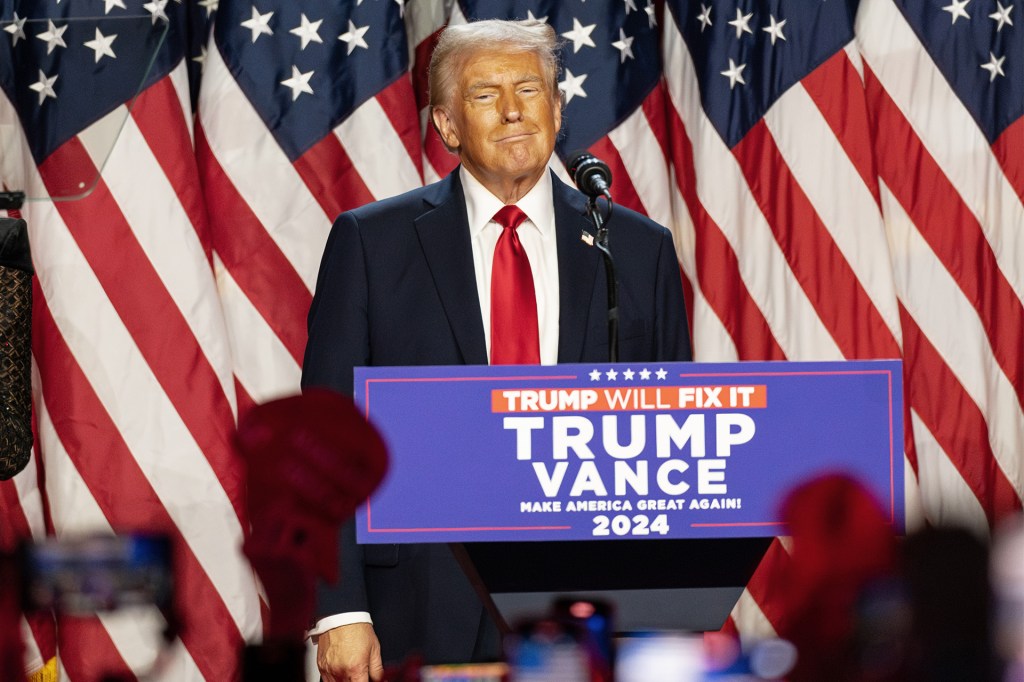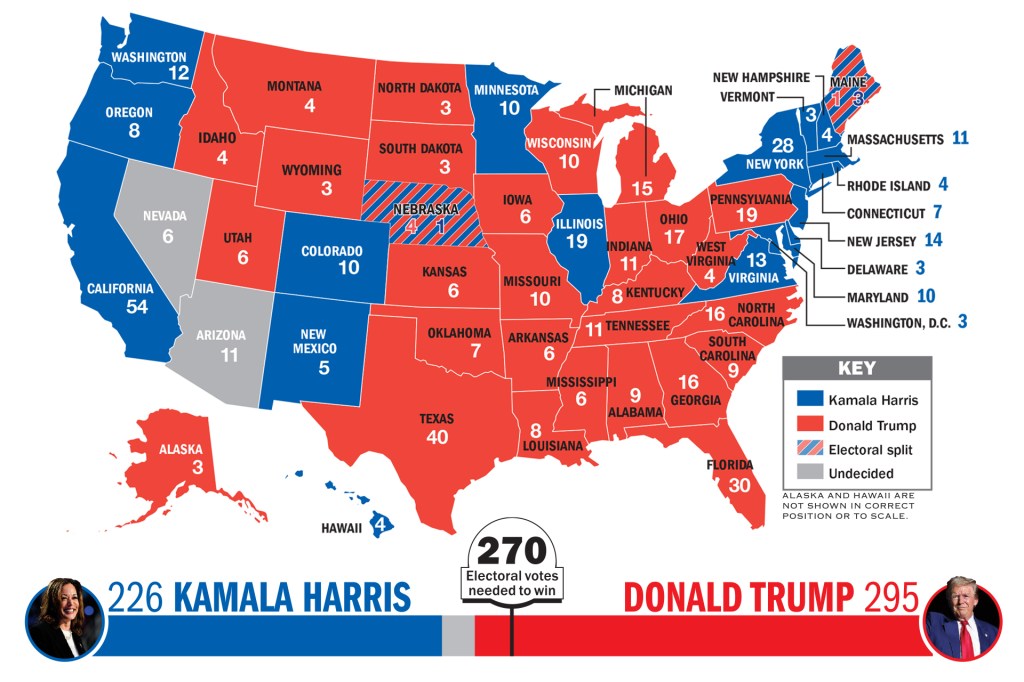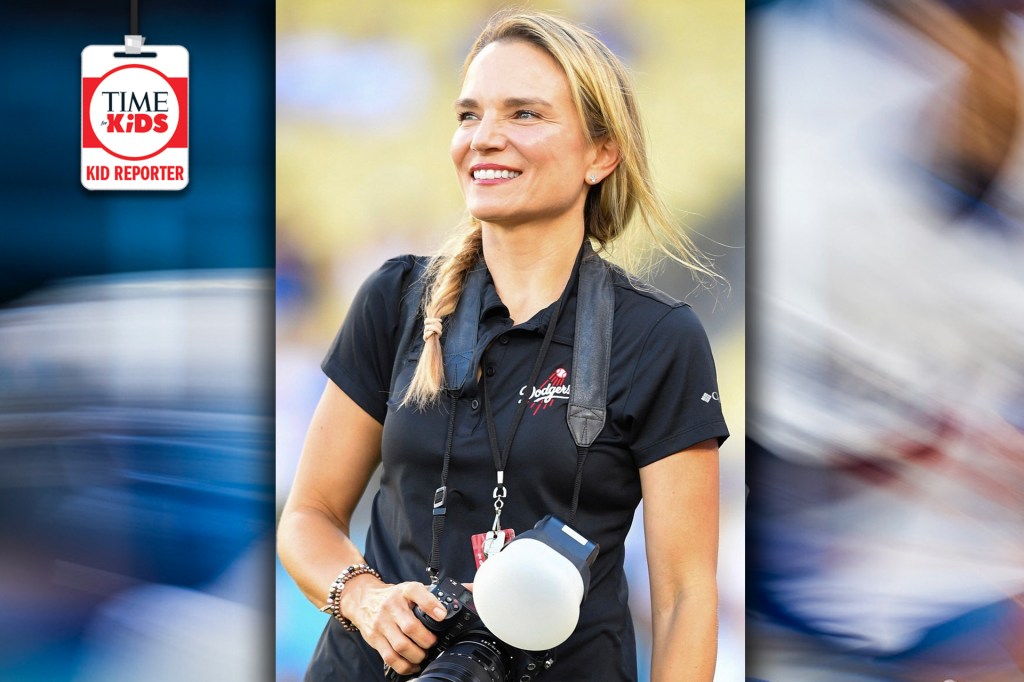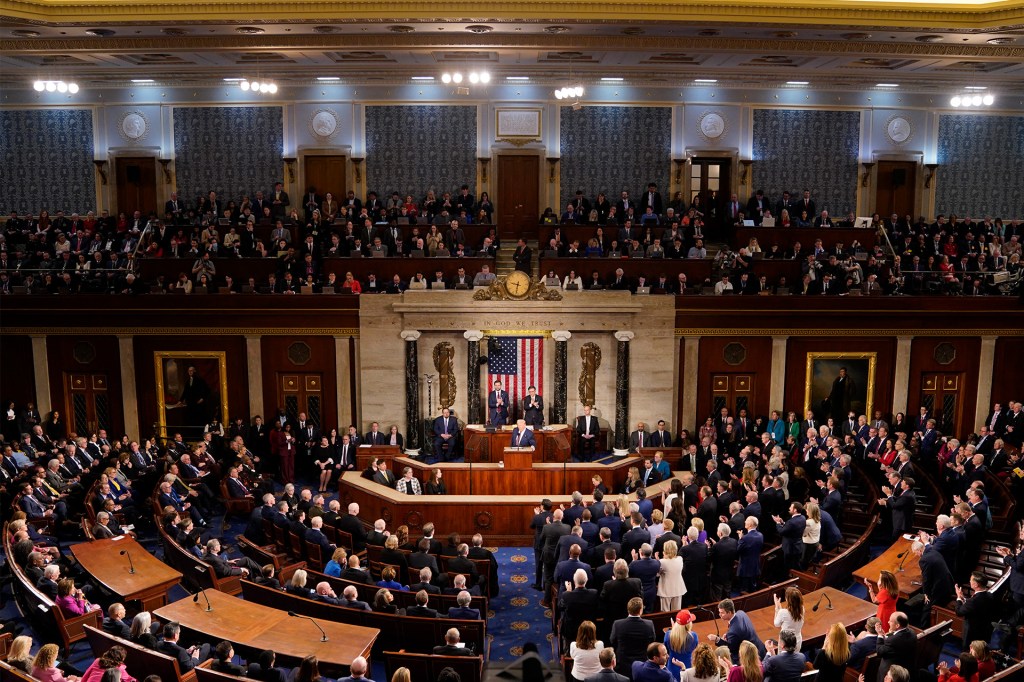Trump Elected

Donald Trump has won the 2024 presidential election, defeating current vice president Kamala Harris to become the 47th president of the United States. Election results were announced early on November 6, on the morning after Election Day.
After his path to victory became clear, Trump addressed supporters gathered in West Palm Beach, Florida. “We overcame obstacles that nobody thought possible,” he said. He then promised Americans, “I will fight for you, for your family, and for your future.”

ELECTION NIGHT Trump addresses his supporters on Election Night in West Palm Beach, Florida.
JOE RAEDLE—GETTY IMAGESElection Season
At press time, Trump, the Republican candidate, had more than 72 million votes. Harris, the Democratic candidate, had around 68 million votes. A few states were still counting ballots. But Trump’s electoral college margin—295 to 226—was decisive decisive certain; clear (adjective) (see “Electoral College”).
Trump’s win caps an unusual election season. When he began his campaign, he was running against current president Joe Biden. But on July 21, Biden dropped out of the race. Harris, his vice president, became the Democratic nominee on August 5.
Polls predicted a tight race for the nation’s top job. The outcome was expected to come down to seven battleground states. At press time, Trump had won five: Georgia, Michigan, North Carolina, Pennsylvania, and Wisconsin. Arizona and Nevada had not been called.
Harris called Trump on Wednesday to congratulate him. Later that afternoon, she addressed supporters in Washington, D.C. She thanked people, including her family, President Biden, and her running mate, Tim Walz, of Minnesota. She conceded the election, but said she would continue to fight for her beliefs. “I will never give up the fight for a future where Americans can pursue their dreams, ambitions, and aspirations,” she said.
What’s Next
Trump will take office on January 20, 2025. He’ll be inaugurated in Washington, D.C. His running mate—Senator J.D. Vance, of Ohio—will also take office that day, as the country’s vice president.
It will be Trump’s second time taking the presidential oath oath a promise; a pledge (noun) of office. He was first elected president in 2016. Four years later, he lost his reelection bid to Biden. Now he becomes only the second presidential candidate in the country’s 248-year history to win nonconsecutive nonconsecutive following after a break (adjective) elections (see “Back to the White House”).
Once in office, Trump and Vance will face many challenges. They’ll have to tackle difficult issues, including immigration and overseas conflicts. They’ll also have to address inflation: Throughout the presidential campaign, Americans expressed concern about the high price of groceries and the rising cost of home ownership.
Trump says he’s ready to get to work for the American people. He’ll likely have the support of Congress (see “What did People Vote on?”). On Election Day, Republicans won control of the U.S. Senate. Election results for the House of Representatives were not yet complete. Officials say it will take time to count all of the votes.
Electoral College

Donald Trump won millions of votes around the country. But a group of 538 people will officially elect him as president. This group is the electoral college. A candidate needs 270 electoral votes to become president. At press time, Trump had 295. The states he won are shown in red. Vice President Kamala Harris had 226 electoral votes. The states she won are shown in blue. Some states have not announced their votes. They are shown in gray.













